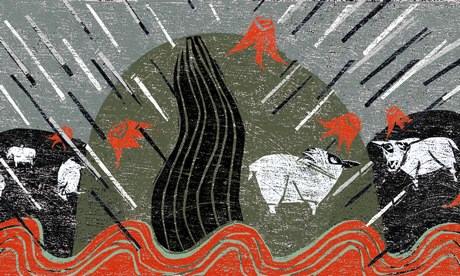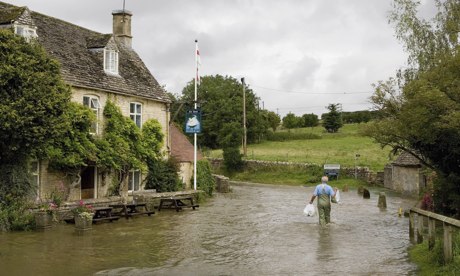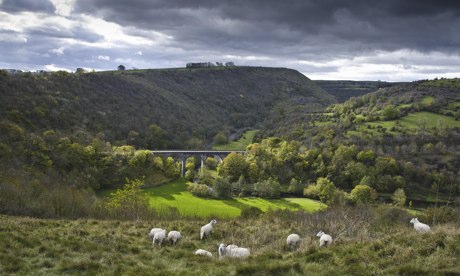´'Önce more they who speak of freedom seek to stain our land with the blood of working people ...
('Winds of the People - Vientos del Pueblo', poem by Miguel Hernandez, set to music/sung by Victor Jara).
http://www.youtube.com/watch?v=1-X48fnUH8g
Víctor Lidio Jara Martínez (September 28, 1932 -- September 16, 1973) was a Chilean teacher, theatre director, poet, singer-songwriter, political activist and member of the Communist Party of Chile. ¨
A distinguished theatre director, he devoted himself to the development of Chilean theatre, directing a broad array of works from locally produced Chilean plays, to the classics of the world stage, to the experimental work of Ann Jellicoe.
Simultaneously he developed in the field of music and played a pivotal role among neo-folkloric artists who established the Nueva Canción Chilena (New Chilean Song) movement which led to a revolution in the popular music of his country under the Salvador Allende government.
Shortly after the Chilean coup of 11 September 1973, he was arrested, tortured and ultimately shot to death with 44 bullet shots by machine gun fire. His body was later thrown out into the street of a shanty town in Santiago.
The contrast between the themes of his songs, on love, peace and social justice and the brutal way in which he was murdered transformed Jara into a symbol of struggle for human rights and justice across Latin America.
And here´s Jackson Browne: Lives in the Balance:
http://www.youtube.com/watch?v=VPFdbKLUmQk
NUNCA MAS! NO! NEVER AGAIN!!
Tuesday, 25 February 2014
Sunday, 9 February 2014
Echoes of the Weeping Rain
Drowning in money: the untold story of the crazy public spending that makes flooding inevitable
Every year billions are spent in Britain and Europe on policies that wreck homes and lives through flooding

‘Vast amounts of public money are spent every year on policies that make devastating floods inevitable.' Illustration by Daniel Pudles
We all know what's gone wrong, or we think we do: not enough spending on flood defences. It's true that the government's cuts have exposed thousands of homes to greater risk, and that the cuts will become more dangerous as climate change kicks in. But too little public spending is a small part of the problem. It is dwarfed by another factor, which has been overlooked in discussions in the media and statements by the government: too much public spending.
Vast amounts of public money, running into billions, are spent every year on policies that make devastating floods inevitable. This is the story that has not been told by the papers or the broadcasters, a story of such destructive perversity that the Guardian has given me twice the usual space today in which to explain it.
Flood defence, or so we are told almost everywhere, is about how much concrete you can pour. It's about not building houses in stupid places on the floodplain, and about using clever new engineering techniques to defend those already there. But that's a small part of the story. To listen to the dismal debates of the past fortnight, you could be forgiven for believing that rivers arise in the plains; that there is no such thing as upstream; that mountains, hills, catchments and watersheds are irrelevant to the question of whether or not homes and infrastructure get drowned.
The story begins with a group of visionary farmers at Pontbren, in the headwaters of Britain's longest river, the Severn. In the 1990s they realised that the usual hill-farming strategy – loading the land with more and bigger sheep, grubbing up the trees and hedges, digging more drains – wasn't working. It made no economic sense, the animals had nowhere to shelter, and the farmers were breaking their backs to wreck their own land.
So they devised something beautiful. They began planting shelter belts of trees along the contours. They stopped draining the wettest ground and built ponds to catch the water instead. They cut and chipped some of the wood they grew to make bedding for their animals, which meant that they no longer spent a fortune buying straw. Then they used the composted bedding, in a perfect closed loop, to cultivate more trees.
One day a government consultant was walking over their fields during a rainstorm. He noticed something that fascinated him. The water flashing off the land suddenly disappeared when it reached the belts of trees the farmers had planted. This prompted a major research programme, which produced the following astonishing results: water sinks into the soil under trees at 67 times the rate at which it sinks into the soil under grass. The roots of the trees provide channels down which the water flows, deep into the ground. The soil there becomes a sponge, a reservoir which sucks up water and then releases it slowly. In the pastures, by contrast, the small sharp hooves of the sheep puddle the ground, making it almost impermeable, a hard pan off which the rain gushes.
One of the research papers estimates that – even though only 5% of the Pontbren land has been reforested – if all the farmers in the catchment did the same thing, flooding peaks downstream would be reduced by about 29%. Full reforestation would reduce the peaks by about 50%. For the residents of Shrewsbury, Gloucester and the other towns ravaged by endless Severn floods, that means – more or less – problem solved.
Did I say the results were astonishing? Well, not to anyone who has studied hydrology elsewhere. For decades the British government has been funding scientists working in the tropics and using their findings to advise other countries to protect the forests or to replant trees in the hills to prevent communities downstream being swept away. But we forgot to bring the lesson home.
 Wading through floods in Swinbrook, Oxfordshire Photograph: Tim Graham/Tim Graham/Getty Images
Wading through floods in Swinbrook, Oxfordshire Photograph: Tim Graham/Tim Graham/Getty Images
So will the rest of the Severn catchment, and those of the other unruly waterways of Britain, follow the Pontbren model? The authorities say they would love to do it. In theory. Natural Resources Wales told me that these techniques "are hardwired into the actions we want land managers to undertake". What it forgot to say is that all tree-planting grants in Wales have now been stopped. The offices responsible for administering them are in the process of closing down. If other farmers want to copy the Pontbren model, they must not only pay for the trees themselves, but they must also sacrifice the money they would otherwise have been paid for farming that land.
For – and here we start to approach the nub of the problem – there is an unbreakable rule laid down by the common agricultural policy. If you want to receive your single farm payment – by far the biggest component of farm subsidies – that land has to be free from what it calls "unwanted vegetation". Land covered by trees is not eligible. The subsidy rules have enforced the mass clearance of vegetation from the hills.
Just as the tree-planting grants have stopped, the land-clearing grants have risen. In his speech to the Oxford Farming Conference, made during the height of the floods, the environment secretary Owen Paterson boasted that hill farmers "on the least productive land" will now receive "the same direct payment rate on their upland farmland as their lowland counterparts". In other words, even in places where farming makes no sense because the land is so poor, farmers will now be paid more to keep animals there. But to receive this money, they must first remove the trees and scrub that absorb the water falling on the hills.
And that's just the start of it. One result of the latest round of subsidy negotiations – concluded in June last year – is that governments can now raise the special mountain payments, whose purpose is to encourage farming at the top of the watersheds, from €250 (£208) per hectare to €450. This money should be renamed the flooding subsidy: it pays for the wreckage of homes, the evacuation of entire settlements, the drowning of people who don't get away in time, all over Europe. Pig-headed idiocy doesn't begin to describe it.
The problem is not confined to livestock in the mountains. In the foothills and lowlands, the misuse of heavy machinery, overstocking with animals and other forms of bad management can – by compacting the soil –increase the rates of instant run-off from 2% of all the rain that falls on the land to 60%.
Paying to keep the hills bare
Sometimes ploughing a hillside in the wrong way at the wrong time of the year can cause a flood – of both mud and water – even without exceptional rainfall. This practice has blighted homes around the South Downs (which arguably should never have been ploughed at all). One house was flooded 31 times in the winter of 2000-2001 by muddy floodscaused by ploughing. Another, in Suffolk, above which the fields had been churned up by pigs, was hit 50 times. But a paper on floods of this kind found that "there are no (or only very few) control measures taken yet in the UK".
 Viaduct over the River Wye, Monsal Dale, Peak District. Photograph: Alamy
Viaduct over the River Wye, Monsal Dale, Peak District. Photograph: Alamy
Under the worst environment secretary Britain has ever suffered, there seems little chance that much of this will change. In November, in response to calls to reforest the hills, Paterson told parliament: "I am absolutely clear that we have a real role to play in helping hill farmers to keep the hills looking as they do." (Bare, in other words.) When asked by a parliamentary committee to discuss how the resilience of river catchments could be improved, the only thing he could think of wasbuilding more reservoirs.
But while he is cavalier and ignorant when it comes to managing land to reduce the likelihood of flooding, he goes out of his way to sow chaos when it comes to managing rivers.
Many years ago, river managers believed that the best way to prevent floods was to straighten, canalise and dredge rivers along much of their length, to enhance their capacity for carrying water. They soon discovered that this was not just wrong but also counterproductive. A river can, at any moment, carry very little of the water that falls on its catchment: the great majority must be stored in the soils and on the floodplains.
By building ever higher banks around the rivers, reducing their length through taking out the bends and scooping out the snags and obstructions along the way, engineers unintentionally did two things. They increased the rate of flow, meaning that flood waters poured down the rivers and into the nearest towns much faster. And, by separating the rivers from the rural land through which they passed, they greatly decreased the area of functional floodplains.
The result, as authorities all over the world now recognise, was catastrophic. In many countries, chastened engineers are now putting snags back into the rivers, reconnecting them to uninhabited land that they can safely flood and allowing them to braid and twist and formoxbow lakes. These features catch the sediment and the tree trunks and rocks which otherwise pile up on urban bridges, and take much of the energy and speed out of the river. Rivers, as I was told by the people who had just rewilded one in the Lake District – greatly reducing the likelihood that it would cause floods downstream – "need something to chew on".
There are one or two other such projects in the UK: Paterson's department is funding four rewilding schemes, to which it has allocated a grand total of, er, £1m. Otherwise, the secretary of state is doing everything he can to prevent these lessons from being applied. Last year he was reported to have told a conference that "the purpose of waterways is to get rid of water". In another speech he lambasted the previous government for a "blind adherence to Rousseauism" in refusing to dredge. Not only will there be more public dredging, he insists, but there will also be private dredging: landowners can now do it themselves.
After he announced this policy, the Environment Agency, which is his department's statutory adviser, warned that dredging could "speed up flow and potentially increase the risk of flooding downstream". Elsewhere, his officials have pointed out that "protecting large areas of agricultural land in the floodplain tends to increase flood risk for downstream communities".
The Pitt Review, commissioned by the previous government after the horrible 2007 floods, concluded that "dredging can make the river banks prone to erosion, and hence stimulate a further build-up of silt, exacerbating rather than improving problems with water capacity". Paterson has been told repeatedly that it makes more sense to pay farmers to store water in their fields, rather than shoving it off their land and into the towns.
But he has ignored all this advice, and started seven pilot projects in which farmers will be permitted to drag all that messy wildlife habitat out of their rivers, to hurry the water to the nearest urban pinchpoint. Perhaps we shouldn't be surprised that Paterson has demanded massive cuts at the Environment Agency, including many of the staff responsible for preventing floods.
Since 2007, there has been a review, a parliamentary inquiry, two bills,new flood management programmes, but next to nothing has changed. Floods, because of the way we manage our land and rivers, remain inevitable. We pay a fortune in farm subsidies and river-mangling projects to have our towns flooded and homes and lives wrecked.
Filthy water and empty aquifers
We pay again in the form of the flood defences necessitated by these crazy policies, and through the extra insurance payments (perhaps we should call them the Paterson tax) levied on homes. But we also pay through the loss of everything else that watersheds give us: beauty, tranquillity, wildlife and, oh yes, the small matter of water in the taps.
In the Compleat Angler, published in 1653, Izaac Walton wrote this: "I think the best Trout-anglers be in Derbyshire; for the waters there are clear to an extremity." No longer. Last summer I spent a weekend walking along the River Dove and its tributaries, where Walton used to fish. All along the river, including the stretch on which the fishing hut built for him by Charles Cotton still stands, the water was a murky blueish brown. The beds of clean gravel he celebrated were smothered in silt: on some bends the accretions of mud were several feet deep.
You had only to raise your eyes to see the problem: the badly ploughed hills of the mid-catchment and above them the drained and burnt moors of the Peak District National Park, comprehensively trashed by grouse shooting estates. A recent report by Animal Aid found that grouse estates in England, though they serve only the super-rich, receive some £37m of public money every year in the form of subsidies. Much of this money is used to cut and burn them, which is likely to be a major cause of flooding. Though there had been plenty of rain throughout the winter and early spring, the river was already low and sluggish.
 Illustration by Daniel Pudles
Illustration by Daniel Pudles
A combination of disastrous forms of upland management has been helping Walton's beloved river to flood, with the result that both government and local people have had to invest heavily in the Lower Dove flood defence scheme. But this wreckage has also caused it to dry up when the rain doesn't fall.
That's the flipside of a philosophy that believes land exists only to support landowners and waterways exist only "to get rid of water". Instead of a steady flow sustained around the year by trees in the hills, by sensitive farming methods, by rivers allowed to find their own course and their own level, to filter and hold back their waters through bends and braiding and obstructions, we get a cycle of flood and drought. We get filthy water and empty aquifers and huge insurance premiums and ruined carpets. And all of it at public expense. Much obliged to you guv'nor, I'm sure.
Twitter: @georgemonbiot. A fully referenced version of this article can be found at monbiot.com
Friday, 7 February 2014
Elections go to Round 2 in El
Salvador
Here’s
where I am – the Hotel Sheraton, San Salvador. It’s beautiful, but sad.
Sad not so much because we just missed winning the presidential elections on the first round (real close 48.2%. Tony Saca already says he’ll support the FMLN next round.
No, because observer delegations are staying here. Most Salvadorans live like this:
Me too. Couldn’t I have asked to meet in a people’s café?
Hate being an observer anyway, although the FMLN invited me. It’s so arrogant – given our hypocritical Me First World democracy. 20% women in Parliament/Congress! Like, totally representative/participatory, dude.
Plus all candidates were men. And, anyone run on climate change? The garbage bucket is screaming!
On cue, a TV magazine(mindless babble) show has just set up. Plenty of ‘girls’ here, of course. Plastic as paint. All the guys that call the shots are – can you guess? - guys.
Discussing ‘young people’. Oh, great: their future within the coming catastrophe, surely? Um .. not so much. Try clothes.

Oh, goody: a music break. Oh, horrificy: All-guy band lip-synching as they fidget-dance. Lilly Manilli would be proud. Says it all, no? Guys pretending to sing ‘romantic’ songs to plastic women.
Don Antonio was wounded fighting with the FMLN. He has the proudest limp I ever saw. Doña Carmen is Monseñor Romero’s cousin. He helped raise her. She gave me this:
Mother Nature will take care of our Sheratons. The reality of Romero, Don Antonio, Doña Carmen and so many others – that reality will endure.
Round 2. Bring it on!
¡¡Hasta la Victoria Global, compañer@s!!
Monday, 3 February 2014
Flipping the corruption myth | ||||||
Corruption is by far not the main factor behind persisting poverty in the Global South.
Last updated: 01 Feb 2014 11:12
| ||||||
| ||||||
|
| ||||||

The Corruption Perceptions Index map does not tell the whole story [Transparency International]
| ||||||
| Transparency International recently published their latest annual Corruption Perceptions Index (CPI), laid out in an eye-catching map of the world with the least corrupt nations coded in happy yellow and the most corrupt nations smeared in stigmatising red. The CPI defines corruption as "the misuse of public power for private benefit", and draws its data from 12 different institutions including the World Bank, Freedom House, and the World Economic Forum. When I first saw this map I was struck by the fact that most of the yellow areas happen to be rich Western countries, including the United States and the United Kingdom, whereas red covers almost the entirety of the global South, with countries like South Sudan, Afghanistan, and Somalia daubed especially dark. This geographical division fits squarely with mainstream views, which see corruption as the scourge of the developing world (cue cliche images of dictators in Africa and bribery in India). But is this storyline accurate? Many international development organisations hold that persistent poverty in the Global South is caused largely by corruption among local public officials. In 2003 these concerns led to the United Nations Convention against Corruption, which asserts that, while corruption exists in all countries, this "evil phenomenon" is "most destructive" in the global South, where it is a "key element in economic underperformance and a major obstacle to poverty alleviation and development". There's only one problem with this theory: It's just not true.
According to the World Bank, corruption in the form of bribery and theft by government officials, the main target of the UN Convention, costs developing countries between $20bn and $40bn each year. That's a lot of money. But it's an extremely small proportion - only about 3 percent - of the total illicit flows that leak out of public coffers. Tax avoidance, on the other hand, accounts for more than $900bn each year, money that multinational corporations steal from developing countries through practices such as trade mispricing. This enormous outflow of wealth is facilitated by a shadowy financial system that includes tax havens, paper companies, anonymous accounts, and fake foundations, with the City of London at the very heart of it. Over 30 percentof global foreign direct investment is booked through tax havens, which now collectively hide one-sixth of the world's total private wealth. This is a massive - indeed, fundamental - cause of poverty in the developing world, yet it does not register in the mainstream definition of corruption, absent from the UN Convention, and rarely, if ever, appears on the agenda of international development organisations. With the City of London at the centre of the global tax haven web, how does the UK end up with a clean CPI? The question is all the more baffling given that the city is immune from many of the nation's democratic laws and free of all parliamentary oversight. As a result of this special status, London has maintained a number of quaint plutocratic traditions. Take its electoral process, for instance: More than 70 percent of the votes cast during council elections are cast not by residents, but by corporations - mostly banks and financial firms. And the bigger the corporation, the more votes they get, with the largest firms getting 79 votes each. This takes US-style corporate personhood to another level. To be fair, this kind of corruption is not entirely out of place in a country where a feudalistic royal family owns 120,000 hectares of the nation's land and sucks up around £40m ($65.7m) of public funds each year. Then there's the parliament, where the House of Lords is filled not by election but by appointment, with 92 seats inherited by aristocratic families, 26 set aside for the leaders of the country's largest religious sect, and dozens of others divvied up for sale to multi-millionaires. Corruption in US is only slightly less blatant. Whereas congressional seats are not yet available for outright purchase, the Citizens United vs FEC ruling allows corporations to spend unlimited amounts of money on political campaigns to ensure that their preferred candidates get elected, a practice justified under the Orwellian banner of "free speech". The poverty factor The UN Convention is correct to say that poverty in developing countries is caused by corruption. But the corruption we ought to be most concerned about has its root in the countries that are coloured yellow on the CPI map, not red. The tax haven system is not the only culprit. We know that the global financial crisis of 2008 was precipitated by systemic corruption among public officials in the US who were intimately tied to the interests of Wall Street firms. In addition to shifting trillions of dollars from public coffers into private pockets through bailouts, the crisis wiped out a huge chunk of the global economy and had a devastating effect on developing countries when demand for exports dried up, causing massive waves ofunemployment. A similar story can be told about the Libor scandal in the UK, when major London banks colluded to rig interest rates so as to suck around $100bn of free money from people even well beyond Britain's shores. How could either of these scandals be defined as anything but the misuse of public power for private benefit? The global reach of this kind of corruption makes petty bribery and theft in the developing world seem parochial by comparison.
During the 1980s and 1990s, the policies that these institutions foisted on the Global South, following the Washington Consensus, caused per capita income growth rates to collapse by almost 50 percent. Economist Robert Pollin has estimated that during this period developing countries lost around$480bn per year in potential GDP. It would be difficult to overstate the human devastation that these numbers represent. Yet Western corporations have benefitted tremendously from this process, gaining access to new markets, cheaper labour and raw materials, and fresh avenues for capital flight. These international institutions masquerade as mechanisms for public governance, but they are deeply anti-democratic; this is why they can get away with imposing policies that so directly violate public interest. Voting power in the IMF and World Bank is apportioned so that developing countries - the vast majority of the world's population - together hold less than 50 percent of the vote, while the US Treasury wields de facto veto power. The leaders of these institutions are not elected, but appointed by the US and Europe, with not a few military bosses and Wall Street executives among them. Joseph Stiglitz, former chief economist of the World Bank, has publicly denounced these institutions as among the least transparent he has ever encountered. They also suffer from a shocking lack of accountability, as they enjoy special "sovereign immunity" status that protects them against public lawsuit when their policies fail, regardless of how much harm they cause. Shifting the blame If these patterns of governance were true of any given nation in the global South, the West would cry corruption. Yet such corruption is normalised in the command centres of the global economy, perpetuating poverty in the developing world while Transparency International directs our attention elsewhere. Even if we do decide to focus on localised corruption in developing countries, we have to accept that it does not exist in a geopolitical vacuum. Many of history's most famous dictators - like Augusto Pinochet, Mobutu Sese Seko, and Hosni Mubarak - were supported by a steady flow of Western aid. Today, not a few of the world's most corrupt regimes have been installed or bolstered by the US, among them Afghanistan, South Sudan, and the warlords of Somalia - three of the darkest states on the CPI map. This raises an interesting question: Which is more corrupt, the petty dictatorship or the superpower that installs it? Unfortunately, the UN Convention conveniently ignores these dynamics, and the CPI map leads us to believe, incorrectly, that each country's corruption is neatly bounded by national borders. Corruption is a major driver of poverty, to be sure. But if we are to be serious about tackling this problem, the CPI map will not be much help. The biggest cause of poverty in developing countries is not localised bribery and theft, but the corruption that is endemic to the global governance system, the tax haven network, and the banking sectors of New York and London. It's time to flip the corruption myth on its head and start demanding transparency where it counts. Dr Jason Hickel lectures at the London School of Economics and serves as an adviser to /The Rules. Follow him on Twitter: @jasonhickel
The views expressed in this article are the author's own and do not necessarily reflect Al Jazeera's editorial policy.
| ||||||
Subscribe to:
Posts (Atom)













